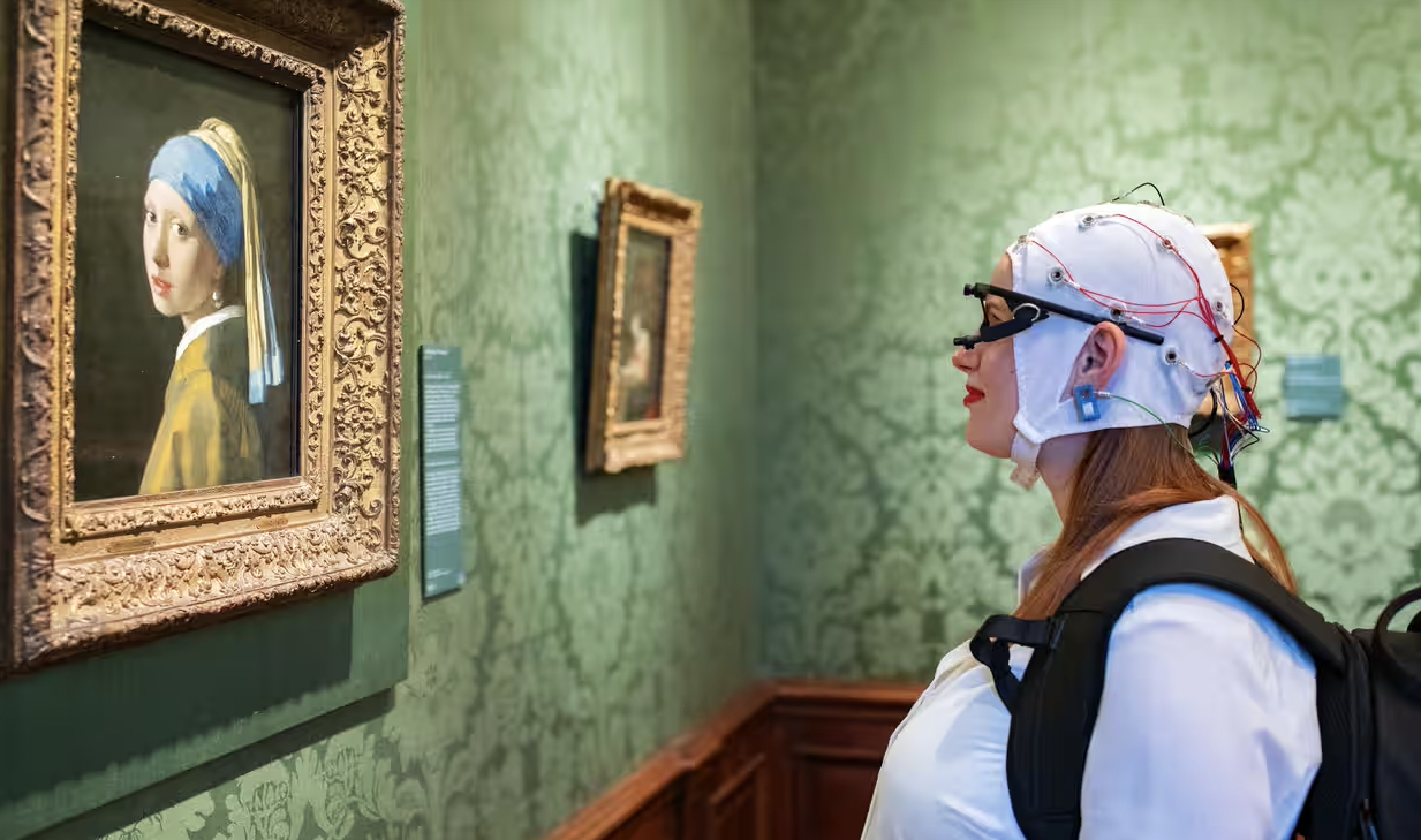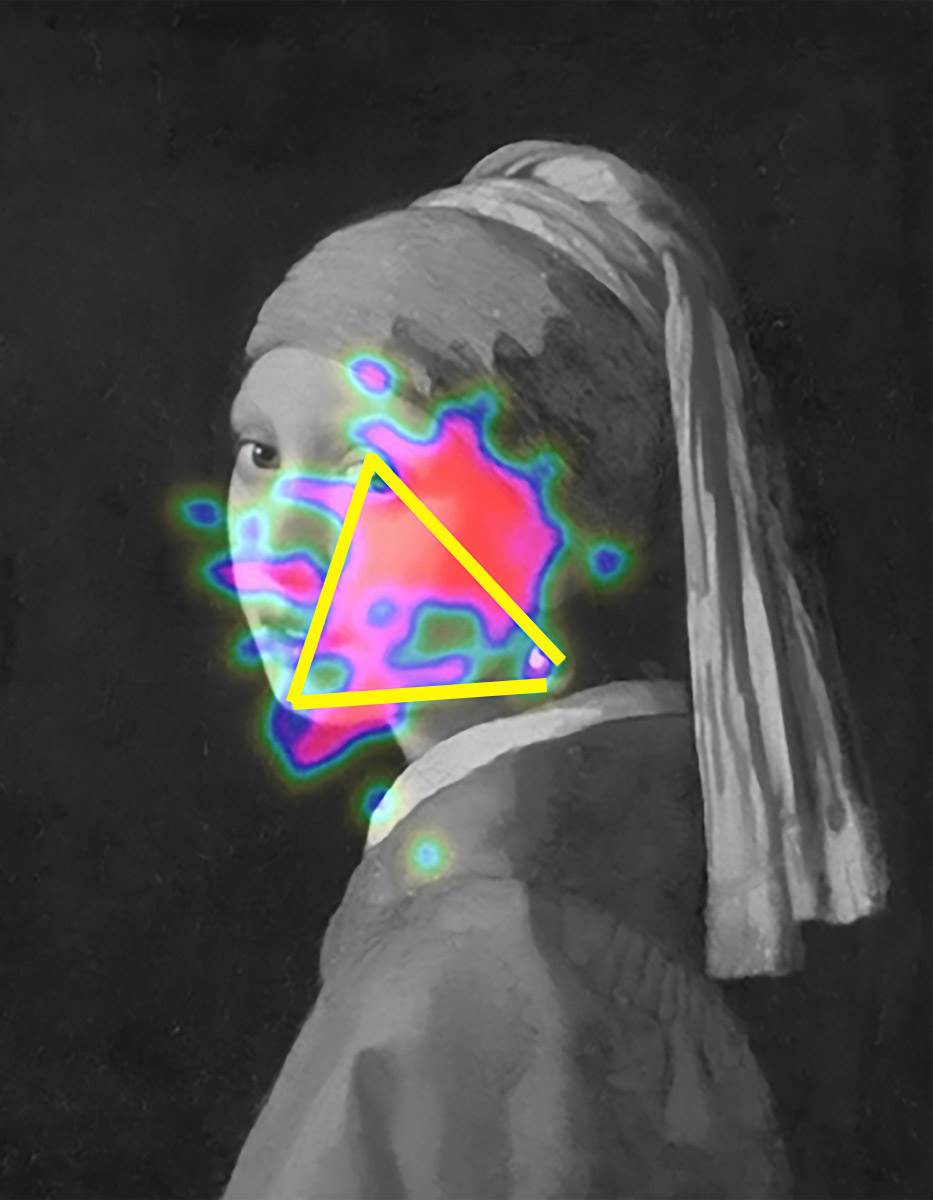This content originally appeared on Open Culture and was authored by Colin Marshall

We may appreciate living in an era that doesn’t require us to travel across the world to know what a particular work of art looks like. At the same time, we may instinctively understand that regarding a work of art in its original form feels different than regarding even the most faithful reproduction. That includes the ten-billion-pixel scan, previously featured here on Open Culture, of Johannes Vermeer’s Girl with a Pearl Earring — which happens to be the very same painting used in a recent scientific study that investigates exactly why it feels so much more interesting to look at art in a museum rather than on a screen or a page.
The study was commissioned by the Mauritshuis, which owns Vermeer’s most famous painting. “Researchers used electroencephalograms (EEGs) to reveal that real artworks, including Girl with a Pearl Earring, elicit a powerful positive response much greater than the response to reproductions,” says the museum’s press release.
“The secret behind the attraction of the ‘Girl’ is also based on a unique neurological phenomenon. Unlike other paintings, she manages to ‘captivate’ the viewer, in a ‘sustained attentional loop.’ ” This process most clearly stimulates a part of the brain called the precuneus, which is “involved in one’s sense of self, self-reflection and episodic memories.”

Girl with a Pearl Earring wasn’t the only painting used in the study, but it produced by far the greatest measurable difference in the viewers’ neurological reaction. The others, which included Rembrandt’s Self-Portrait (1669) and Van Honthorst’s Violin Player, lack the distinctively prominent human features that encourage additional looking: “As with most faces, visitors look first at the Girl’s eyes and mouth, but then their attention shifts to the pearl, which then guides the focus back to the eyes and mouth, then to the pearl, and so on.” Museumgoers wearing electroencephalogram-reading headsets may not be quite what Walter Benjamin had in mind when he put his mind to defining the “aura” of an original artwork — but they have, these 90 or so years later, lent some scientific support to the idea.
Related content:
Why is Vermeer’s Girl with a Pearl Earring Considered a Masterpiece?: An Animated Introduction
A 10 Billion Pixel Scan of Vermeer’s Masterpiece Girl with a Pearl Earring: Explore It Online
A Guided Tour Through All of Vermeer’s Famous Paintings, Narrated by Stephen Fry
Based in Seoul, Colin Marshall writes and broadcasts on cities, language, and culture. His projects include the Substack newsletter Books on Cities and the book The Stateless City: a Walk through 21st-Century Los Angeles. Follow him on Twitter at @colinmarshall or on Facebook.
This content originally appeared on Open Culture and was authored by Colin Marshall
Colin Marshall | Sciencx (2024-10-18T09:00:04+00:00) Neuroscience Shows That Viewing Art in Museums Engages the Brain More Than Reproductions. Retrieved from https://www.scien.cx/2024/10/18/neuroscience-shows-that-viewing-art-in-museums-engages-the-brain-more-than-reproductions/
Please log in to upload a file.
There are no updates yet.
Click the Upload button above to add an update.
